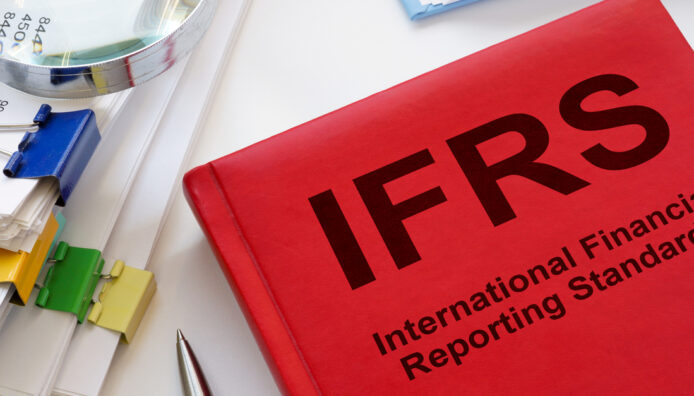
In the ever-evolving landscape of financial reporting standards, staying abreast of the latest changes is essential for professionals in the insurance industry. One such significant development is the International Financial Reporting Standard 17 (IFRS 17), which brings about a fundamental shift in how insurance contracts are accounted for. For actuaries and insurance professionals, understanding IFRS 17 is paramount to navigating the complexities of modern accounting practices. In this blog post, we’ll delve into the basics of IFRS 17, its objectives, key principles, and its implications for the insurance sector.
What is IFRS 17?
IFRS 17, issued by the International Accounting Standards Board (IASB), replaces the previous standard, IFRS 4. It aims to provide a comprehensive framework for the accounting of insurance contracts. It introduces consistent principles for recognising revenue and profits from insurance contracts. This is further aimed at enhancing transparency, comparability, and financial stability in the insurance industry.
What was wrong with IFRS 4?
The precursor to IFRS 17, IFRS4 was a significant step in accounting of insurance companies, when it was introduced. However, insurance accounting is a very complex topic, and IFRS 4 was only meant to be the first phase in that direction and was eventually meant to be replaced. In fact, the IFRS 17 project, while it was under development, was referred to as IFRS 4 Phase 2.
Some of the drawbacks of IFRS 4 were:
- IFRS 4 allowed differences in accounting of insurance contracts across geographies. It allowed the liability to be based on statutory reserves, which varied from country to country
- IFRS 4 financial statements were incomparable to financial statements from other industries
These drawbacks made it quite hard for analysts and investors to compare the financial statements of insurance companies and make investment decisions.
Objectives of IFRS 17
The primary objectives of IFRS 17 are as follows:
Transparency: Enhance transparency by providing users of financial statements with relevant and reliable information about an insurer’s insurance contracts.
Consistency: Ensure consistency in the accounting treatment of insurance contracts across different jurisdictions, thereby facilitating comparability.
Better risk assessment: Enable stakeholders to make more informed decisions by improving the understanding of an insurer’s risk exposure and financial performance.
Financial stability: Promote financial stability by addressing the existing diversity in accounting practices and reducing the scope for earnings volatility.
All these objectives aim to improve confidence of financial markets in the insurance industry.
Key principles of IFRS 17
IFRS 17 introduces several key principles that reshape the accounting landscape for insurance contracts:
Grouping of contracts: Insurance contracts are grouped based on similar characteristics, such as risk profiles and cash flow patterns, to facilitate consistent measurement and recognition.
Measurement of liabilities: Under IFRS 17, insurance liabilities are measured using a fair value approach, incorporating the time value of money and the contractual cash flows. Fair value approach requires measurement at the market value where available, or to use market-consistent assumptions.
Contractual Service Margin (CSM): The CSM represents the unearned profit that insurers recognise over the coverage period, providing a systematic way to reflect the profitability of insurance contracts.
Risk Adjustment: IFRS 17 requires insurers to recognise a risk adjustment to reflect the uncertainty associated with fulfilling insurance contracts. This adjustment is included in the measurement of the liability for remaining coverage.
We will cover each of these principles in subsequent blog posts.
Implications for actuaries and insurance professionals
The adoption of IFRS 17 presents several implications for actuaries and insurance professionals:
Data requirements: Adequate data management and analytics capabilities are crucial for implementing IFRS 17, as it requires detailed information on insurance contracts and their associated cash flows.
Modelling complexities: Actuaries need to develop sophisticated modeling techniques to estimate cash flows, discount rates, and risk adjustments accurately.
Collaboration across functions: Successful implementation of IFRS 17 requires collaboration among various functions within an insurance company, including actuarial, finance, IT, and risk management.
Training and education: Actuaries and insurance professionals need to invest in continuous training and education to stay updated with the latest developments in IFRS 17 and ensure compliance with the standard.
In conclusion, IFRS 17 represents a significant paradigm shift in insurance accounting, emphasising transparency, consistency, and financial stability. Actuaries and insurance professionals play a crucial role in enabling this transition, which requires a deep understanding of the standard’s principles and implications.
Like any other regulatory change, IFRS 17 presents both risks and opportunities for insurance companies. Engaging with the right team of professionals and proper planning will ensure that insurance companies get ahead compared to competitors.
At Numerica, we can help with this transition. Our actuaries have several years of experience in helping insurance companies successfully transition to IFRS 17. Read more about our insurance consulting offerings here.
We will cover many of the topics covered here in future posts, so watch this space!
